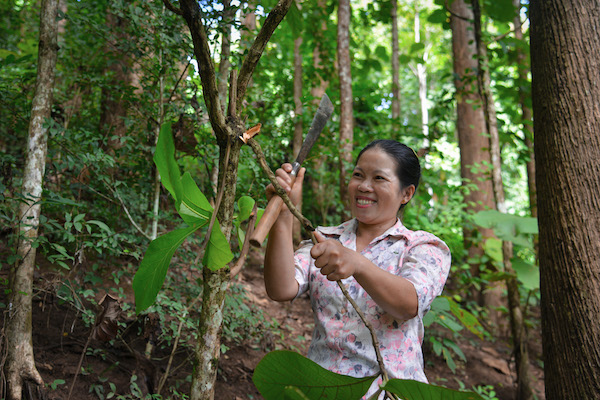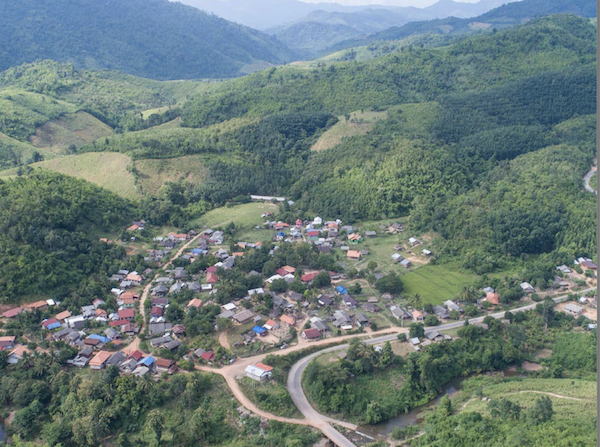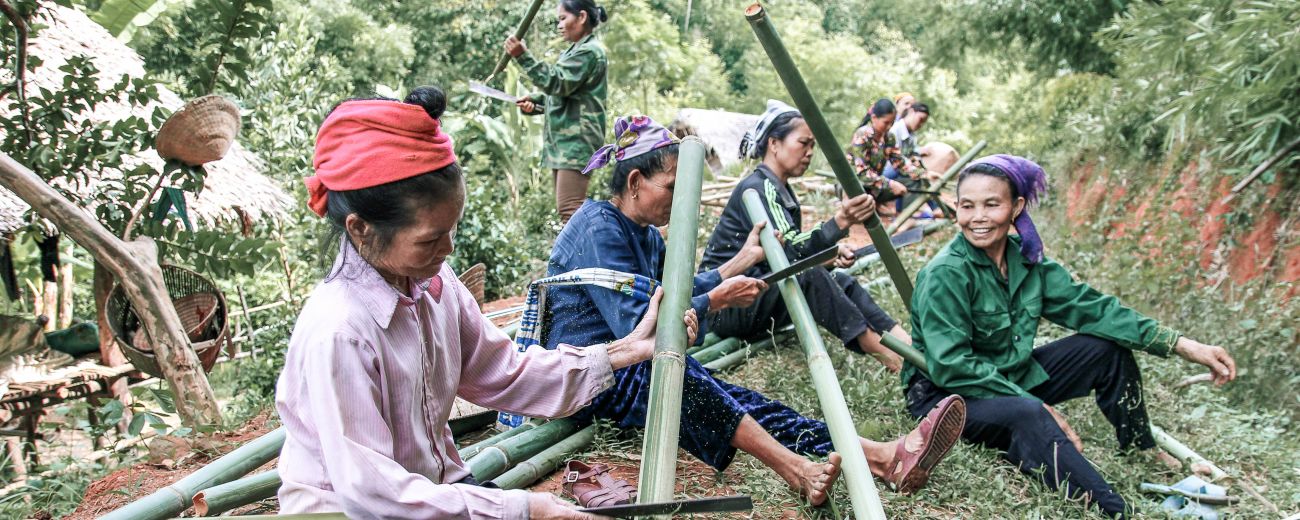
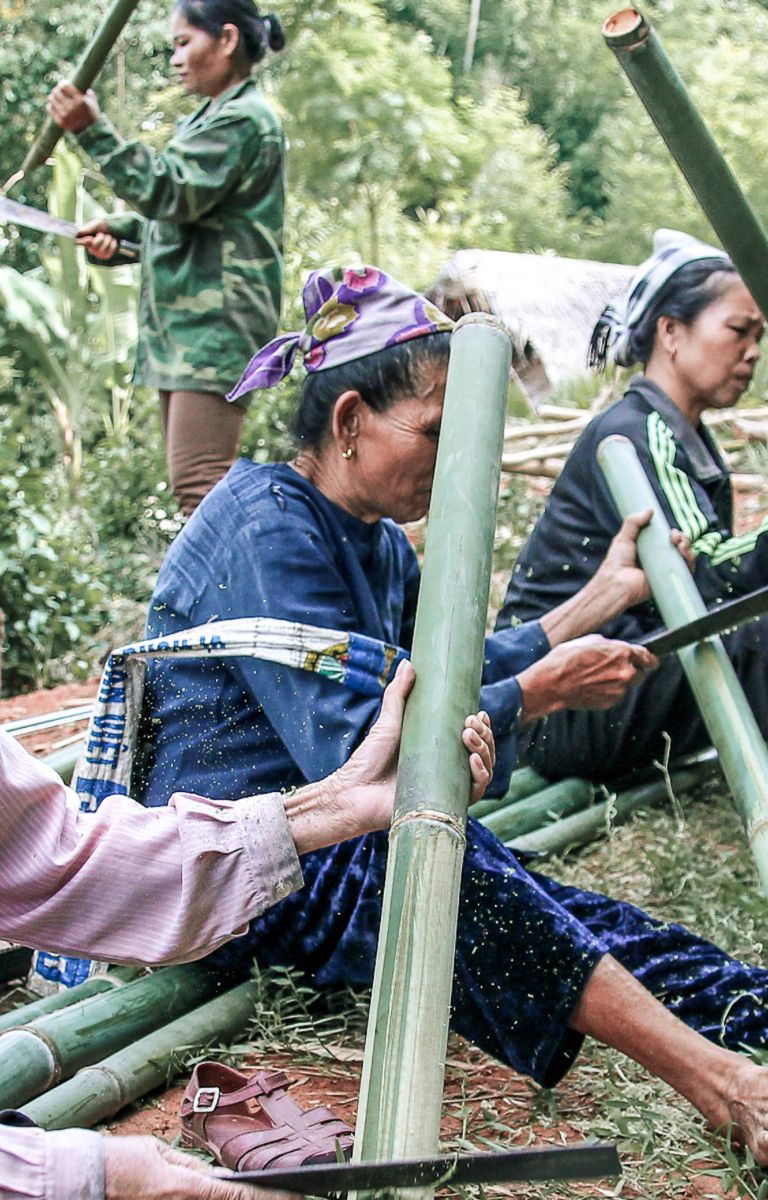
For generations, villagers like Nong Thi Huong have relied on lung bamboo for their livelihoods. Huong calls her lung forest in the mountains of Viet Nam’s Nghe An Province a “bank in the backyard”.
“Whenever I need money, I can harvest and sell it,” she says.
Lung bamboo (Bambusa longissima sp. nov) is versatile. It is used to make items ranging from toothpicks to garden fences, baskets and lanterns. Growing international demand for such products nets Viet Nam approximately US$300 million a year.
But Nghe An’s bamboo forests have been rapidly shrinking due to overharvesting, a trend exacerbated by insecure land rights. Because lung bamboo is a major source of household incomes in the mountains of Nghe An, replanting and sustainable management are urgently needed.
Reversing a downward trend
A few years ago, local bamboo forests were at risk of disappearing entirely. Nghe An’s provincial government set a goal of restoring 6,000 hectares of lung forest and planting another 270 hectares with lung bamboo by 2025. But progress was slowed due to the lack of effective propagation methods.
Since 2019, RECOFTC’s forest landscape restoration initiative FLOURISH has been helping the local government reverse the trend. By harnessing the power of market demand for sustainable products, the initiative is helping villagers take steps to restore bamboo forests. This will allow them to develop decent livelihoods and play a part in slowing down the rate of climate change.
The initiative is showing how to achieve social, economic and environmental goals at the landscape scale. And, in an unexpected test, it is helping communities withstand the economic shock of the COVID-19 pandemic.
The initiative is showing how to achieve social, economic and environmental goals at the landscape scale. And, in an unexpected test, it is helping communities withstand the economic shock of the COVID-19 pandemic.
Training boosts production – and prices
To test solutions, FLOURISH began working with Huong’s village in Quy Chau District and four others nearby.
With funding from the German government through the International Climate Initiative, RECOFTC partnered with the local government’s Nghe An Forest Protection and Development Fund and the International Bamboo and Rattan Organisation. The goal is to help communities restore their bamboo forests and use them to secure sustainable livelihoods.
So far, FLOURISH has trained hundreds of villagers on bamboo management, harvesting and primary processing techniques. They have also learned to use a method for propagating bamboo called offset planting that can aid restoration efforts. Huong was among those trained.
“The technique for propagating bamboo is so easy to learn and apply,” says Huong. “My transplants have grown well. Their survival rate is about 80 percent.”
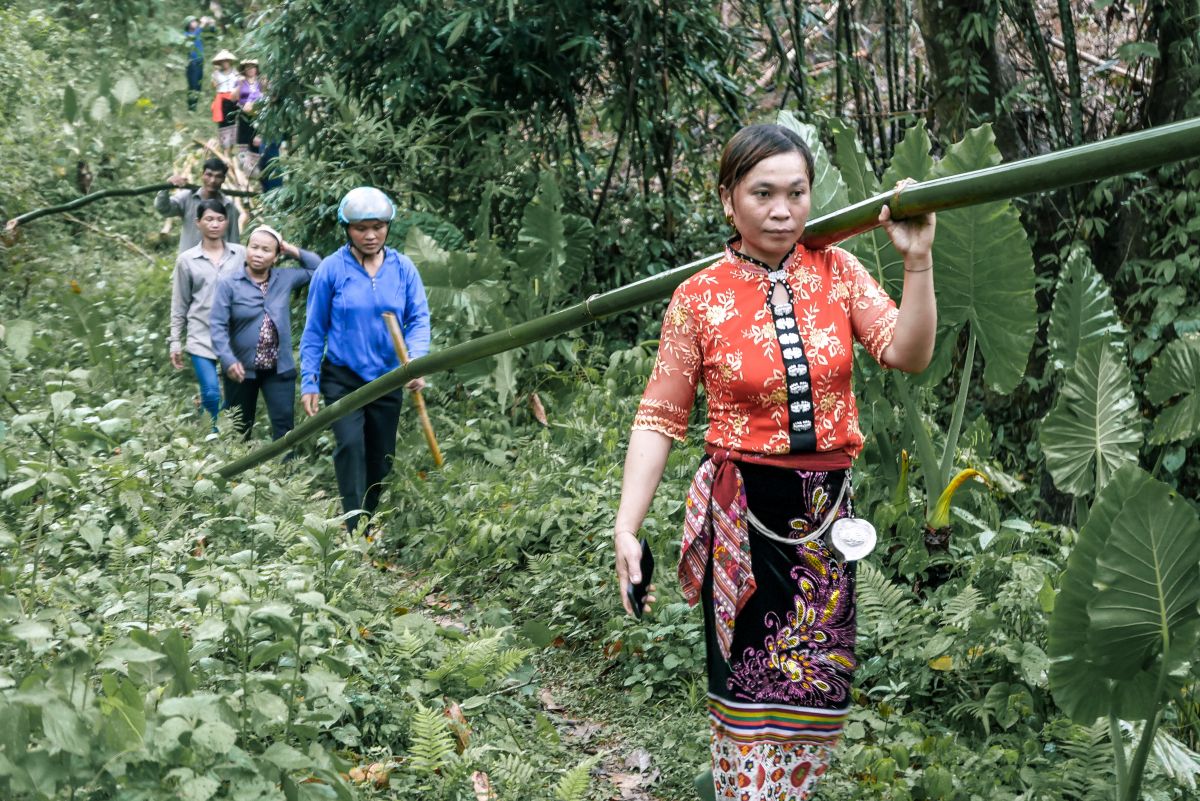
The initiative has also supported smallholders in all five villages to negotiate and sign partnership agreements with the Duc Phong Co.,LTD, a handicraft company. Under these partnerships, the company commits to buy bamboo at agreed prices that, guaranteeing sales for people with few other options for generating income.
“I can observe our lives becoming better,” says Huong. She says average incomes from selling lung bamboo have doubled to 15 to 17 million Vietnamese dong per year since the project began.
A global demand for sustainable forest products
Duc Phong Co. makes bamboo lampshades and baskets for export to Europe. This trade with Europe promotes sound management of bamboo forests thanks to sustainability provisions in the 2019 European Union-Viet Nam Free Trade Agreement. This should help communities like Huong’s, which are restoring their bamboo forests, to participate in international supply chains for sustainable products.
“The partnership agreements aim to promote sustainable bamboo production and trade,” says Luong Van Phi, head of the Ban Village lung harvesting farmers' group in Chau Thang Commune. “As well as agreeing on the terms of business, both parties commit to working together to manage and protect lung bamboo forests so that they can be harvested sustainably.”

The agreements proved vital when COVID-19 reached Viet Nam and the government imposed restrictions that limited people’s ability to generate income.
“Thanks to the agreements, the local communities were more economically resilient than others because they could at least still sell bamboo to the Duc Phong company,” says Trang Hoang, who coordinates the FLOURISH project.
Securing land rights is vital
But for livelihoods to be truly sustainable and for villagers to have incentives to restore their bamboo forests, they need secure rights to forest land.
“To prosper, people who depend on forests must be able to use, manage and benefit from forests,” says RECOFTC Executive Director David Ganz. “They must also be secure in the knowledge that they will be able to carry on doing so for the foreseeable future. But across Southeast Asia, these rights are insecure or absent.”
To address this, FLOURISH has been training community members in Nghe An Province on how to apply for a Red Book, which formalizes a 50-year title to forest land. By the end of 2020, the project had helped 241 households obtain their Red Book, covering a total of more than 1,550 hectares of forest land.
“The project helped my community conserve lung and sustain our livelihoods,” Huong says. “We now know how to harvest lung and then replant it. Over-harvesting of bamboo has been stopped, and the rate of illegal bamboo harvesting has significantly dropped, compared with what it was before the project. We have benefited from the partnership between community members and Duc Phong company, which buys all the lung bamboo that we harvest at a stable price.”

